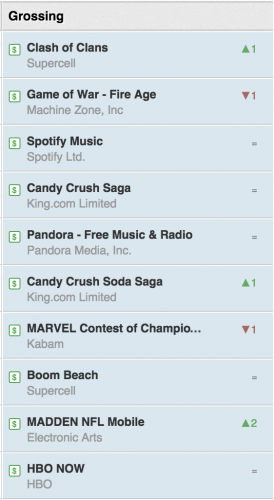Eric Sefert: about "whales" and user retention in shareware applications
Eric Seufert, vice president of acquisition and user engagement at Rovio, spoke about the features of the behavior of “whales” in shareware applications. And shared his thoughts on user retention.
The original version of the material can be found on Mobile Dev Memo, a website dedicated to the mobile industry, run by Eric Seferth himself, author of the book Freemium Economics.
It is widely believed that in the mobile industry, which is traditionally characterized by very low conversion, it is the “whales”, or users paying large sums, that form the basis of the economy of any project, investing disproportionately to what proportion of users they represent. Despite the fact that this statement is indisputable, the following assumptions are often made about these users based on it:
- that they spend extravagantly and perhaps recklessly, wasting more than they can afford;
- that their high LTV consists of large one-time expenses or a series of quick purchases. In other words, that they spend large amounts of money in limited time intervals;
- that they are being secretly hunted by developers who, in an effort to get money, use monetization techniques tailored specifically to the behavioral patterns of “whales”.
Nevertheless, the current state of affairs in the chart of the highest-grossing games of the American App Store deprives these assumptions of any basis.
Among the applications that are in the top ten highest-grossing, more than half were released before 2014. In addition, 30% of the apps on this chart are Spotify, Pandora and HBO Now! – are multimedia; they are subscribed to.
The above data does not refute the claim that users paying large sums (for example, those whose LTV is > $1000) form the main income from shareware projects (current or total), since it is impossible to know exactly what LTV looks like in any of the mentioned cases. However, this data suggests that user retention equals monetization; since none of those apps that are in the Top 10 highest-grossing are in the Top 10 for downloads, it would be fair to assume that all these apps are focused on ensuring the maximum possible engagement for as long as possible for a longer time, while simultaneously monetizing users in a way that ensures long-term interaction rather than short-term buying activity.
This is especially important in the case of applications that you need to subscribe to. Since a “buying boom” is impossible in such an application, the only components of success for it are 1) the ability to turn users into subscribers and 2) the ability to keep users as long as possible (and, of course, these two abilities are interrelated).
These data make one wonder if poor visibility in the App Store is really to blame for the fact that the list of the highest-grossing applications is so rarely updated with new names? Could it be that it’s all about developers who are not only unable to monetize applications so that marketing expenses pay off, but are also unable to create a project that would attract users for a long time?
Since LTV depends equally on retention and monetization, then perhaps it is retention that is the missing component, because of which the vast majority of applications are unable to succeed, as a result of which their developers are forced to strengthen short-term monetization, which in turn puts increasing pressure on both retention and the notorious short-term monetization.
A source: http://mobiledevmemo.com
Translated by Irina SmirnovaYou will be able to learn about the latest trends in the gaming industry first-hand, personally meet and discuss working issues with leading companies (including representatives of 101XP, who will be at the event) in the game development and publishing market at White Nights Moscow 2015, which will be held on October 13-14.


